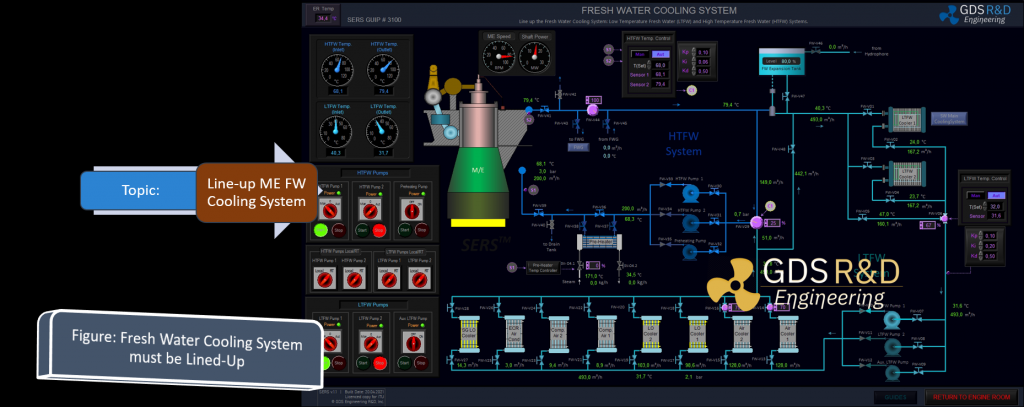With our product, certified by the Nippon Kaiji Kyokai (Class NK) as a Class A (Full Mission) Engine Room Simulator, our purpose is to ensure that the instructors can efficiently utilize this training environment in their Maritime Education and Training (MET) programs and that the trainees can have a productive training.
Developed by GDS Engineering R&D; our product called Ship Engine Room Simulator (SERS);
- Meets IMO STCW 2010 requirements (with Manila Amendments).
- Supports training programs using IMO Model Course 2.07 (2017 Edition).
- Certified by Class NK for meeting both IMO STCW 2010 and Model Course 2.07.
- The simulator is the digital twin model of a real ship (ref. to User Manuals for complete references and details)
- Configurable for an individual training study on a Workstation/PC
- Configurable for group studies with distributed system configuration using distributed computers and large touch-screen panels as well as association of hardware consoles and panels.
- Provides automated training reports.
- Includes high voltage training functions
- Simulates all engine room machinery and systems with over 50 Graphical User Interface (GUI) Panels.
- All systems are interfaced with all engine room parameters, any change in any parts of the systems is immediately affect the other systems, as in reality!
- Emphasizes all aspects of the electrical operations with realistic functions.
- Easy graphical user interfaces that considerably decrease the time for learning and allowing instructors to directly move on to the training objectives.
- Includes 5 User Manuals, allowing to apply the manuals to training programs directly.
- Includes Exercise Workbooks for students to come to the simulator center with their study books. When books and user manuals are incorporated, it provides a similar work studies in real ships.
- Exercise Book I is to use in the Operational Level of STCW 2010 training / competency levels. There are more than 10 example exercises are provided; already meeting the STCW objectives.
- Exercise Book II is to use in the Management Level of STCW 2010 training/ competency levels. There are more than 10 example exercises are provided; already meeting the STCW objectives.
- Engine room systems are simulated with high resolution rendered components providing easily readable GUIs on screens, which considerably decrease the learning time and moving on to the training subjects.
For more information, clisk here to read the details of the GDS ERS in our ERS product page. https://www.globaldynamicsystems.com/
or watch our YOUTUBE CHANNEL for more information with some example videos.
